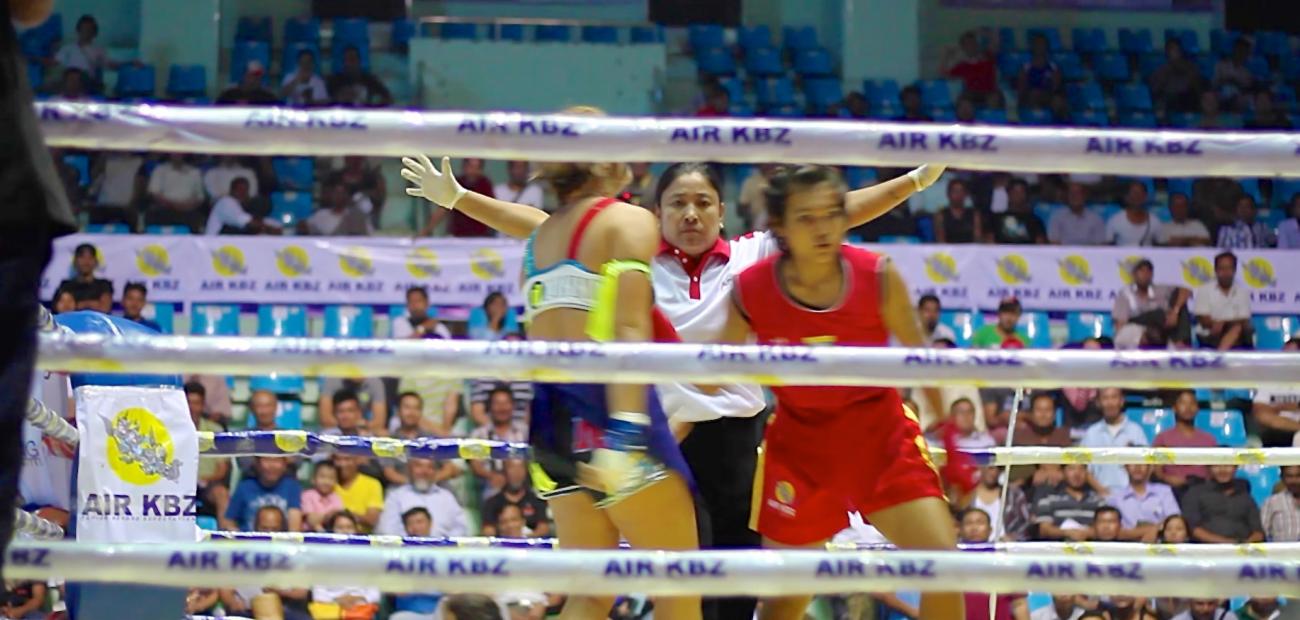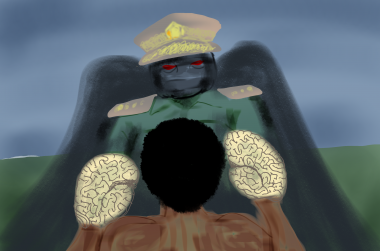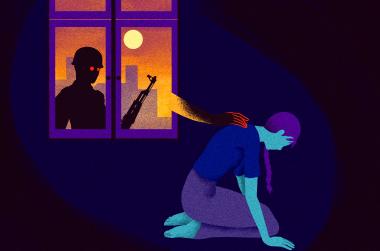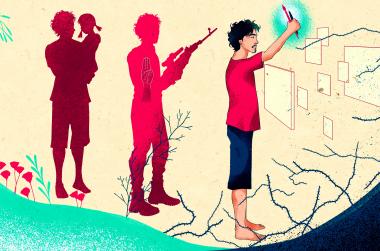The teenager batters her adversary with furious fists in a thrashing, propeller whirl of punches that smacks the older woman backwards towards the baying crowd. But her sturdier opponent absorbs the assault and lashes back, grunting as she grabs the first fighter by the hair and slams a knee into her nose.
Referee Myint Myint Kyaw circles the brawling pair with the expert eye of a veteran kickboxer, well used to the crunch of knuckle on bone.
After the more experienced contender cracks her young challenger across the cheek with a heavy strike that knocks her to the floor, Myint Myint Kyaw dives between them arms flung wide, holding firm until the girl staggers to her feet.
The spectators, seasoned to the spray of blood, sweat and spittle that often flecks the front rows in Myanmar’s bone-shattering sport of lethwei, grumbles its impatience for a winner.
But Myint Myint Kyaw is impervious.
Someone will fall, but not just yet.
A bloody, bare knuckle form of kickboxing, lethwei dates back centuries in Myanmar and is considered one of the toughest sports in the world.
Fighters, their fists wrapped but not gloved, can use feet, hands, heads, knees and elbows in bouts that are only won by knockout.
Myint Myint Kyaw has seen many matches like this in her decades in the sport, first as a pioneering Myanmar lethwei fighter and now as a referee.
During her career she trained pummelling sacks filled with stones and was back in the ring weeks after her youngest child was born, but she says some of her greatest battles were against conservative ideas about women.
The handful of female fighters who have broken into this male-dominated sport have faced ingrained societal pressures in a country where most people expect women to be feminine, not strong or aggressive.
“As a woman, there were difficulties,” says Myint Myint Kyaw, waving a meaty fist glinting with a large sparkling ring.
The grandmother, now approaching her 50s, is passionate about elevating the women’s sport to the same level as the men’s.
“We had to struggle very hard, from a lowly position. I want to show that women who wear tha-na-kha (powder) on their cheeks, mothers who breastfeed their children and rock them in the cradle, can fight inside a 20-square-feet ring on equal terms with men.”
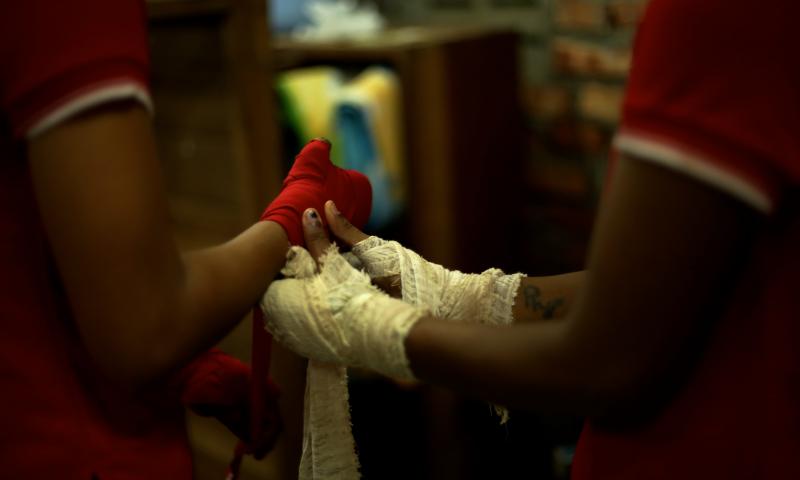
Myint Myint Kyaw has had a passion for lethwei since she was at school.
“I would join the boys and fight in secret,” she says with a hoarse, muscular chuckle.
“I took all this fighting and stuff very seriously. I wasn’t interested in just putting on a show. I liked to put all my strength into each strike.”
But her parents and eldest brother -- a respected monk within their community -- were aghast that she would choose such an unladylike pursuit and they compelled her to marry before she finished high school.
“They were getting old and they didn’t want me to do lethwei.
“I had to become a wife and we started having children almost immediately. Three of them, one after another,” she says.
Marriage turned out to be less of an impediment to her lethwei ambitions than she had feared however, because her husband was also a kickboxer and more understanding than her family.
“When my youngest son was 45 days old, I started boxing again. The prize money was very valuable.”
Of the 80 or 90 fights she had in her career, the most memorable was with Daung Ma Lay, the champion of Upper Myanmar.
“If could beat her, I would receive one million kyats [a huge sum at the time] and I would become a champion too. So I tried very very hard.
“I couldn’t sleep because my heart was beating so much. (And when I did) I would dream of fighting her. Inside my mosquito net, I’d be throwing punches and elbowing her,” she recalls, laughing.
The match ended in a draw. But Myint Myint Kyaw remains proud of her performance.
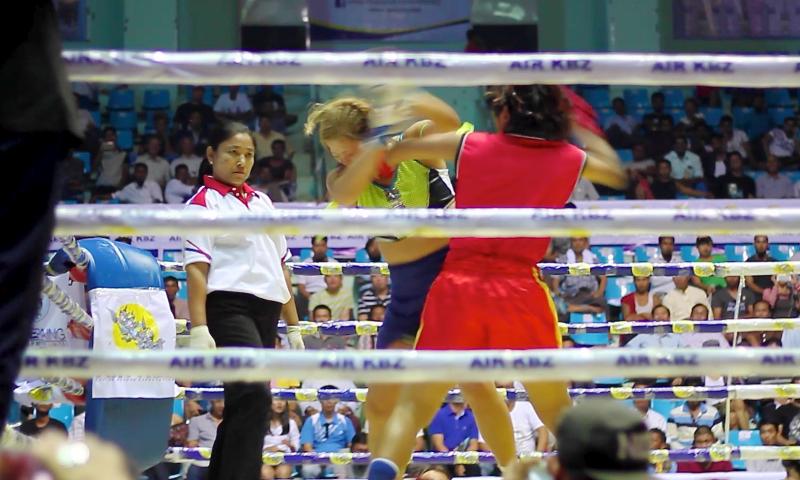
In recent years some of Myanmar’s top lethwei kickboxers have competed in glitzy televised bouts against international stars in the multi-million dollar mixed martial arts circuit, while the country has cheered the homecoming tours of US-based ethnic Kachin fighter Aung La Nsang.
But when Myint Myint Kyaw was making a name for herself, training conditions were anything but glamorous.
They made different weights of punch bags by filling some with heavy rocks and others with rubber and sand.
“There was no modern equipment. That was how we trained, and how we struggled,” she says.
Women’s contests were seen as sideshows to the men’s bouts and often relegated to to monks’ funerals, temple fairs and annual festivals.
“We slept in monasteries, community halls, schools, or council officials’ houses when we travelled. We would cook the meals by ourselves too at the monastery.
“Now that we can penetrate international competitions, we stay at hotels, we get treated to meals,” Myint Myint Kyaw says, gesturing approvingly at the low-ceilinged parlour of the Yangon motel where she is staying while she referees a contest in the city.
“I feel proud and thankful.”
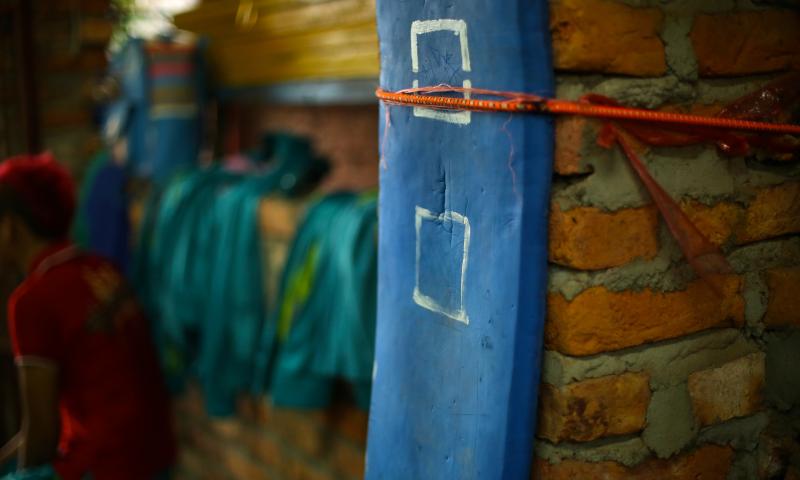
Even her conservative family has become more supportive.
Her brother, the monk, kicked her and her children out of the family house at one point because she refused to give up lethwei.
It was only after the government recognised her wins and small perks followed that he relented.
“We got a landline at our house,” she says -- a rare treasure in a country that was deeply isolated at the time.
“I used my lethwei prize money for my children’s novitiation (at the monastery). I supported my family, friends and mentors with these winnings.”
Myint Myint Kyaw turned to refereeing about 20 years ago and also runs a textile business in Mandalay.
In 2012, Myanmar’s military-backed government approached her to manage one of the lethwei teams as the country prepared to hold its first Southeast Asian Games the following year.
She hesitated.
“That was when my brother said, ‘You should do it’. So I left my business and joined the SEA Games team.”
The event was a coming out party for the nation, which was opening up after decades under army rule. It was also a chance for Myanmar’s lethwei fighters to prove their worth -- 10 of the 11 fighters who took part in the Muay kickboxing contest won a medal.

Throughout her life, she faced criticism for choosing lethwei over conventional careers and she says this continues.
“‘She’s got three grandchildren already and she is still wearing trousers’. People say things like that. But I can’t let those things enter my head,” she says.
“My job requires me to wear trousers. I can’t do it wearing hta-mein [the traditional Myanmar sarong]. I am just going to walk my own path to succeed in my job.”
After years of conflict over her desire to fight, in the end it is her family that she credits with her success.
“Now they happily accept what I am doing,” she says.
“How was I able to become a champion after giving birth to three kids? Because my parents were great. My brother was great. My family was behind me, looking after my children. I didn’t have to look back. That’s why I am still able to do this today.”
Female fighters now have access to better equipment and the public is less judgmental.
At the Yangon tournament the younger Myanmar fighter loses out to her more powerful Japanese opponent.
But for Myint Myint Kyaw these bouts are a way to increase the visibility of the women’s sport, which she says still does not get the recognition it deserves.
She wants a new generation to take the sport to the next level.
“I’m going to become an old woman soon. I want them to succeed.”
This is part of a series on women in lethwei. For a sense of the challenges facing younger fighters see our story on the teenage kickboxers in Myeik hoping to make their mark on the sport.
Interview December 2016

